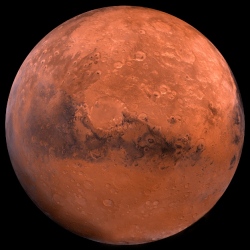
The rover will carry seven scientific projects, aimed at paving the way for future manned missions, seeking evidence of life and storing samples to be brought back in the future. Among them is a device for turning the CO2 that dominates the thin Martian air into oxygen.
This could support human life or make rocket fuel for return missions. The rover will also carry two cameras and an experimental weather station among its 88lb (40kg) of instruments. "This is a really exciting day for us," said astronaut and Nasa administrator John Grunsfeld, announcing the Mars 2020 scientific payload in Washington DC.
The one-tonne, $1.9bn (£1.12bn) vehicle will be closely modelled on Curiosity, the rover that touched down on the red planet in August 2012. Its suite of instruments is downsized compared to Curiosity, which is carrying 165lb (75kg) of scientific kit. Some of that space will be used to package up cylindrical rock samples drilled from the planet’s surface.
Nasa hopes these can be shipped home by future return flights. Being able to produce oxygen could help with that ambition, since transporting fuel is heavy and expensive. Other Nasa spacecraft can already produce oxygen from CO2 but the new "MOXIE" device will test this capability in the Martian atmosphere, for the first time.
